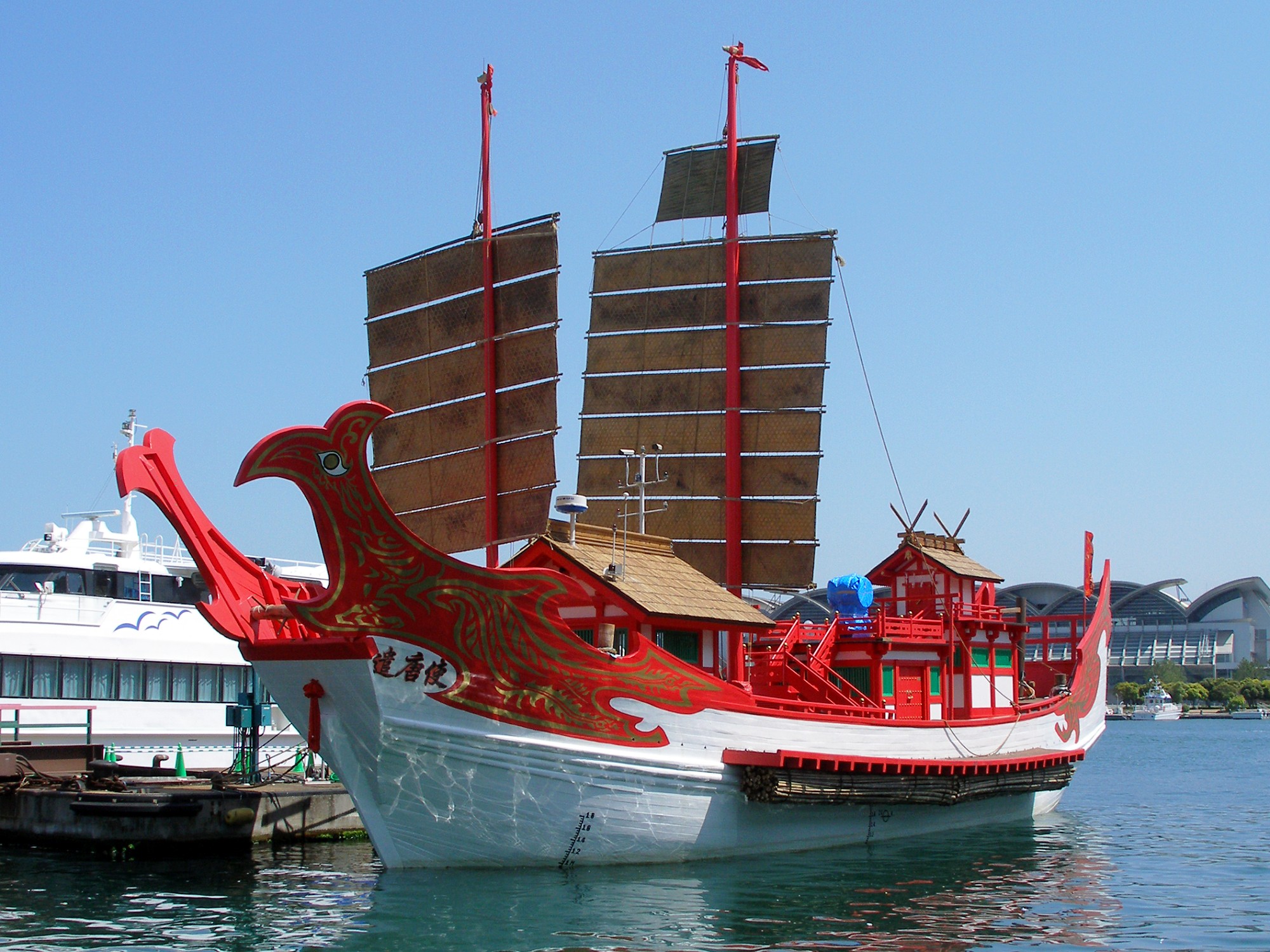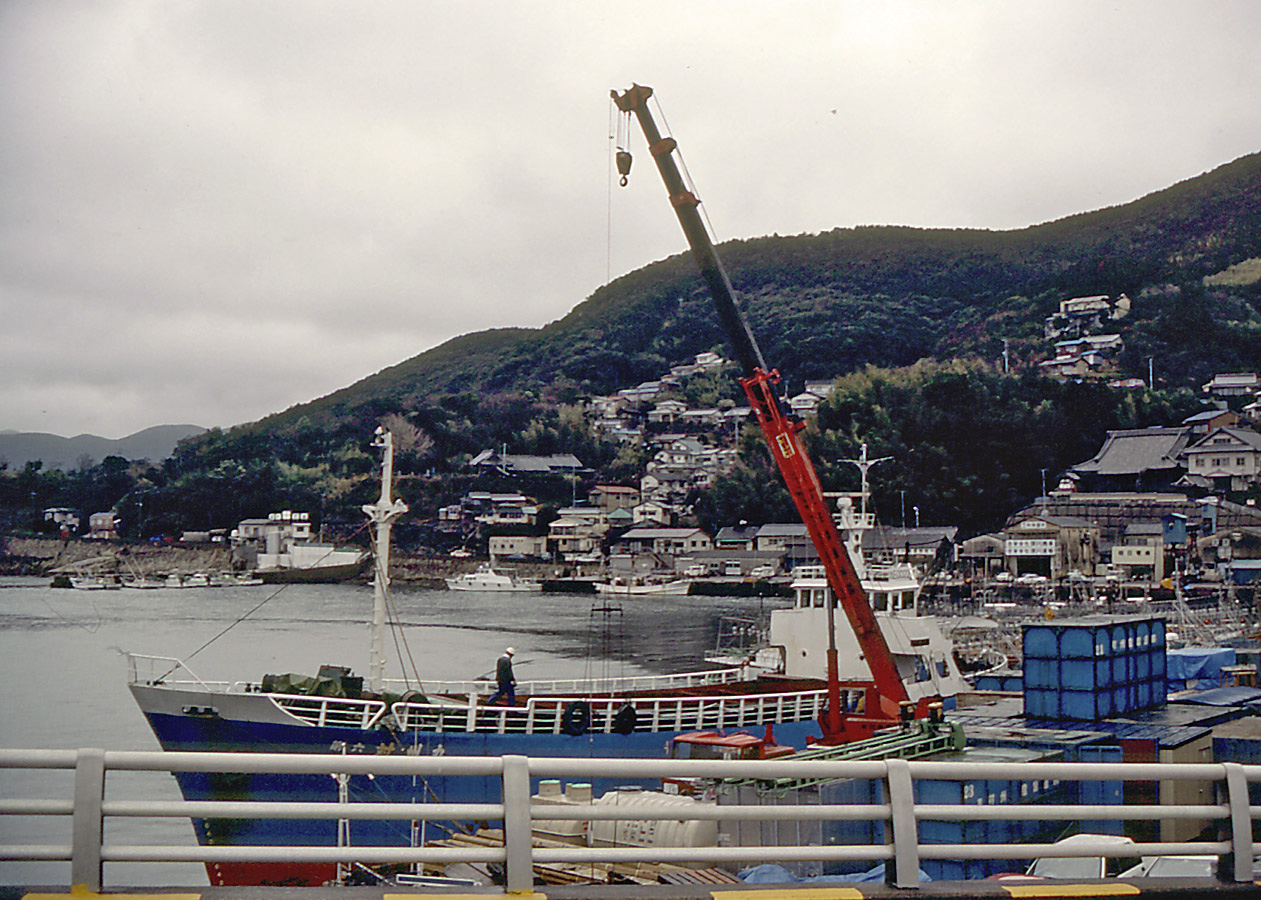|
Fujiwara No Kadanomaro
was a 9th century Japanese ambassador to Tang dynasty China. He was the son of Fujiwara no Oguromaro. Mission to China In 803, the Emperor Kanmu ordered an expedition to China, led by Kadanomaro. During the Heian period, emperors usually sent envoys to China soon after their accession; this had been delayed in Kanmu's case because of the relocation of the capital. The mission left in May, but severe storms damaged the ships and forced a return to Japan, after spending some time in Dazaifu, Fukuoka. In June the next year, the mission, consisting of four ships, was sent out again. Kadanomaro with three vice-secretaries (Ishikawa Michimasa, Tachibana Hayanari, and the young Kukai) travelled on one vessel; Saicho, Yoshitada (Saicho's translator), and Sugawara no Kiyotomo were on another. The expedition was split up en route, with Kadanomaro's ship arriving in Fujian after thirty-four days, rather than the intended Yangtze River Delta. The local people were initially opposed to a ... [...More Info...] [...Related Items...] OR: [Wikipedia] [Google] [Baidu] |
Japan
Japan ( ja, 日本, or , and formally , ''Nihonkoku'') is an island country in East Asia. It is situated in the northwest Pacific Ocean, and is bordered on the west by the Sea of Japan, while extending from the Sea of Okhotsk in the north toward the East China Sea, Philippine Sea, and Taiwan in the south. Japan is a part of the Ring of Fire, and spans an archipelago of 6852 islands covering ; the five main islands are Hokkaido, Honshu (the "mainland"), Shikoku, Kyushu, and Okinawa. Tokyo is the nation's capital and largest city, followed by Yokohama, Osaka, Nagoya, Sapporo, Fukuoka, Kobe, and Kyoto. Japan is the eleventh most populous country in the world, as well as one of the most densely populated and urbanized. About three-fourths of the country's terrain is mountainous, concentrating its population of 123.2 million on narrow coastal plains. Japan is divided into 47 administrative prefectures and eight traditional regions. The Greater Tokyo Ar ... [...More Info...] [...Related Items...] OR: [Wikipedia] [Google] [Baidu] |
Fujian
Fujian (; alternately romanized as Fukien or Hokkien) is a province on the southeastern coast of China. Fujian is bordered by Zhejiang to the north, Jiangxi to the west, Guangdong to the south, and the Taiwan Strait to the east. Its capital is Fuzhou, while its largest city by population is Quanzhou, both located near the coast of the Taiwan Strait in the east of the province. While its population is predominantly of Chinese ethnicity, it is one of the most culturally and linguistically diverse provinces in China. The dialects of the language group Min Chinese were most commonly spoken within the province, including the Fuzhou dialect of northeastern Fujian and various Hokkien dialects of southeastern Fujian. Hakka Chinese is also spoken, by the Hakka people in Fujian. Min dialects, Hakka and Mandarin Chinese are mutually unintelligible. Due to emigration, a sizable amount of the ethnic Chinese populations of Taiwan, Singapore, Malaysia, Indonesia, and the Philip ... [...More Info...] [...Related Items...] OR: [Wikipedia] [Google] [Baidu] |
Year Of Birth Missing
A year or annus is the orbital period of a planetary body, for example, the Earth, moving in its orbit around the Sun. Due to the Earth's axial tilt, the course of a year sees the passing of the seasons, marked by change in weather, the hours of daylight, and, consequently, vegetation and soil fertility. In temperate and subpolar regions around the planet, four seasons are generally recognized: spring, summer, autumn and winter. In tropical and subtropical regions, several geographical sectors do not present defined seasons; but in the seasonal tropics, the annual wet and dry seasons are recognized and tracked. A calendar year is an approximation of the number of days of the Earth's orbital period, as counted in a given calendar. The Gregorian calendar, or modern calendar, presents its calendar year to be either a common year of 365 days or a leap year of 366 days, as do the Julian calendars. For the Gregorian calendar, the average length of the calendar ye ... [...More Info...] [...Related Items...] OR: [Wikipedia] [Google] [Baidu] |
Japanese Missions To Tang China
represent Japanese efforts to learn from the Chinese culture and civilization in the 7th, 8th and 9th centuries. The nature of these contacts evolved gradually from political and ceremonial acknowledgment to cultural exchanges; and the process accompanied the growing commercial ties which developed over time. Between 607 and 838, Japan sent 19 missions to China. Knowledge and learning was the principal objective of each expedition. For example: Priests studied Chinese Buddhism. Officials studied Chinese government. Doctors studied Chinese medicine. Painters studied Chinese painting. Approximately one third of those who embarked from Japan did not survive to return home.Hoffman, Michael "Cultures Combined in the Mists of Time: Origins of the China-Japan relationship,"''Asia Pacific Journal: Japan Focus.'' February 3, 2006; reprinting article in ''Japan Times,'' January 29, 2006. See also * Sinocentrism * Japanese missions to Sui China * Japanese missions to Ming China * J ... [...More Info...] [...Related Items...] OR: [Wikipedia] [Google] [Baidu] |
Tsushima Island
is an island of the Japanese archipelago situated in-between the Tsushima Strait and Korea Strait, approximately halfway between Kyushu and the Korean Peninsula. The main island of Tsushima, once a single island, was divided into two in 1671 by the Ōfunakoshiseto canal and into three in 1900 by the Manzekiseto canal. These canals were driven through isthmuses in the center of the island, forming "North Tsushima Island" (Kamino-shima) and "South Tsushima Island" (Shimono-shima). Tsushima also incorporates over 100 smaller islands, many tiny. The name ''Tsushima'' generally refers to all the islands of the Tsushima archipelago collectively. Administratively, Tsushima Island is in Nagasaki Prefecture. The island group measures about by and had a population of about 34,000 . The main islands (that is, the "North" and "South" islands, and the thin island that connects them) are the largest coherent satellite island group of Nagasaki Prefecture and the eighth-largest in Japan. The ... [...More Info...] [...Related Items...] OR: [Wikipedia] [Google] [Baidu] |
Emperor Dezong Of Tang
Emperor Dezong of Tang (27 May 742According to Li Kuo's biography in the '' Old Book of Tang'', he was born on the ''guisi'' day in the 4th month of the 1st year of the Tianbao era of Tang Xuanzong's reign. This date corresponds to 27 May 742 in the Gregorian calendar.(「天宝元年四月癸巳,生于长安大内之东宫。」) ''Old Book of Tang'', vol. 12. – 25 February 805),According to Li Kuo's biography in the '' Old Book of Tang'', he died on the ''guisi'' day in the 1st month of the 21st year of the Zhenyuan era of his reign, at the age of 64 (by East Asian reckoning). This date corresponds to 25 Feb 805 in the Gregorian calendar.「(贞元)二十一年春正月...癸巳,....。是日,上崩于会宁殿,享寿六十四。」) ''Old Book of Tang'', vol. 13. personal name Li Kuo, was an emperor of the Chinese Tang Dynasty and the oldest son of Emperor Daizong. His reign of 26 years was the third longest in the Tang dynasty (surpassed only by Emperor Xuanzong ... [...More Info...] [...Related Items...] OR: [Wikipedia] [Google] [Baidu] |
Chang'an
Chang'an (; ) is the traditional name of Xi'an. The site had been settled since Neolithic times, during which the Yangshao culture was established in Banpo, in the city's suburbs. Furthermore, in the northern vicinity of modern Xi'an, Qin Shi Huang of the Qin dynasty, China's first emperor, held his imperial court, and constructed his massive mausoleum guarded by the Terracotta Army. From its capital at Xianyang, the Qin dynasty ruled a larger area than either of the preceding dynasties. The imperial city of Chang'an during the Han dynasty was located northwest of today's Xi'an. During the Tang dynasty, the area that came to be known as Chang'an included the area inside the Ming Xi'an fortification, plus some small areas to its east and west, and a substantial part of its southern suburbs. Thus, Tang Chang'an was eight times the size of the Ming Xi'an, which was reconstructed upon the site of the former imperial quarters of the Sui and Tang city. During its heyday, Chang ... [...More Info...] [...Related Items...] OR: [Wikipedia] [Google] [Baidu] |
Yangtze River Delta
The Yangtze Delta or Yangtze River Delta (YRD, or simply ) is a triangle-shaped megalopolis generally comprising the Wu Chinese-speaking areas of Shanghai, southern Jiangsu and northern Zhejiang. The area lies in the heart of the Jiangnan region (literally, "south of the River"), where the Yangtze River drains into the East China Sea. Having fertile soil, the Yangtze Delta abundantly produces grain, cotton, hemp and tea. In 2018, the Yangtze Delta had a GDP of approximately US$2.2 trillion, about the same size as Italy. The urban build-up in the area has given rise to what may be the largest concentration of adjacent metropolitan areas in the world. It covers an area of around and is home to over 115 million people as of 2013, of whom an estimated 83 million are urban. If based on the greater Yangtze Delta zone, it has over 140 million people in this region. With about a tenth of China's population and a fifth of the country's GDP, the YRD is one of the fastest growing a ... [...More Info...] [...Related Items...] OR: [Wikipedia] [Google] [Baidu] |
Sugawara No Kiyotomo
, also read as Kiyokimi, was a Japanese court noble, poet, and politician of the early Heian period. He served as Vice Minister of Ceremonial Affairs, Mayor of the Left Capital District, and Vice Governor of Harima Province (824-825), and held the court rank of Junior Third Rank. He was the father of Sugawara no Koreyoshi, and grandfather of Sugawara no Michizane who was deified as Tenjin, the deity of scholarship. Life He was born in 770 as the fourth son of Governor ('' suke kokushi'') of Tōtōmi Province, Sugawara no Furuhito. Although his father was a well-known Confucian scholar, his home was poor and Kiyotomo and his brothers suffered from poverty. Because his home was poor, he decided to study economic history. In 784, after an imperial edict, he began his service under Crown Prince Sawara and became a student of literary studies at the Imperial University in 789, at the age of 20. He excelled in his studies and was a ''monjō tokugōshō'', a title awarded to th ... [...More Info...] [...Related Items...] OR: [Wikipedia] [Google] [Baidu] |
Ambassador
An ambassador is an official envoy, especially a high-ranking diplomat who represents a state and is usually accredited to another sovereign state or to an international organization as the resident representative of their own government or sovereign or appointed for a special and often temporary diplomatic assignment. The word is also used informally for people who are known, without national appointment, to represent certain professions, activities, and fields of endeavor, such as sales. An ambassador is the ranking government representative stationed in a foreign capital or country. The host country typically allows the ambassador control of specific territory called an embassy, whose territory, staff, and vehicles are generally afforded diplomatic immunity in the host country. Under the Vienna Convention on Diplomatic Relations, an ambassador has the highest diplomatic rank. Countries may choose to maintain diplomatic relations at a lower level by appointing a chargé d'affa ... [...More Info...] [...Related Items...] OR: [Wikipedia] [Google] [Baidu] |





.jpg)